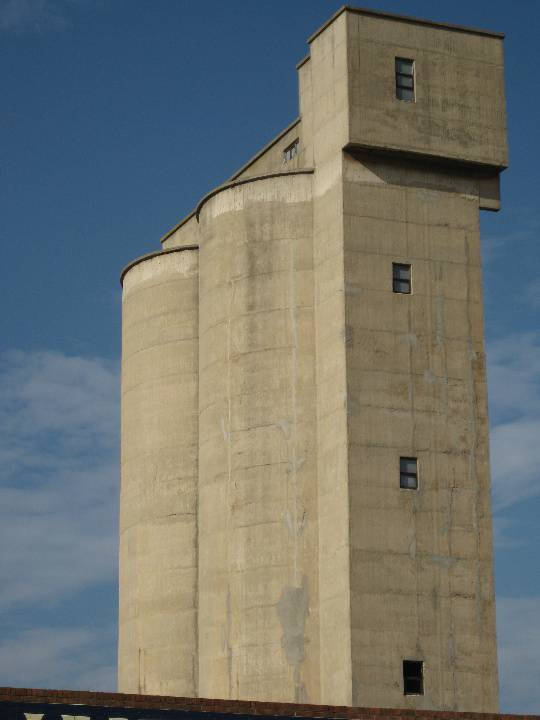| Back to search results » | Back to search page » |
|
BRUNSWICK PLASTER MILLS PTY LTD SILOS (FORMER)
Other NameBrunswick Plaster Mills Pty Ltd (non-fibrous plaster works), Factory Location20-24 TINNING STREET, BRUNSWICK, MORELAND CITY LevelIncluded in Heritage Overlay |
|
Statement of Significance
What is significant?
How is it significant?
Why is it significant? Aesthetically, the silos are significant for their distinctive form
and appearance. A unique surviving example of its type in the City of
Moreland (AHC Criterion B.2), the structure exhibits almost sculptural
qualities in its massive scale, its bold cylindrical form and its
stark concrete finish (AHC Criterion F.1). The silos are a prominent
local landmark that is visible from many parts of the area, and also
forms an important element along the major vista of the Upfield
railway line (AHC Criterion E.1).
The concrete structure at the edge of 20-24 Tinning Street
comprises an attached pair of cylindrical silos (each about 10 metres
diameter by 25 metres tall), an attached rectilinear chute containing
the materials handling equipment, and a roof-mounted head house. The
silos were built in 1952 by Brunswick Plaster Mills Pty Ltd,
manufacturers of Plaster of Paris and other building products, which
had occupied the original building factory on the property (a large
galvanised iron shed, now no longer extant) since 1926.
The silos are of historical and aesthetic significance to the
City of Moreland.
Historically, the silos are significant for associations with the
expansion of industry in Brunswick in the post-war period (AHC
Criterion A.4). As such, they demonstrate the ongoing development of a
theme that has played a significant part in Brunswick (and, more
broadly, in the entire City of Moreland) since the mid-nineteenth
century. More specifically, the silos provide evidence of the local
presence of the building product industry, which, apart from the
celebrated brick kilns and chimneys, is not well demonstrated by
surviving built fabric in Brunswick (AHC Criterion B.2). They also
stand as the last surviving remnant of a plaster factory that operated
from this site (under various proprietors) between 1917 and 1966. At
that time, the complex was one of only a few nonfibrous plaster
factories in the metropolitan area. Although there was a number of
fibrous plaster factories in Brunswick and Coburg, most have since
been demolished, leaving these silos as a rare (and readily
interpreted) evidence of this specific industry within the City of
Moreland (AHC Criterion B.2).
Group
Manufacturing and Processing
Category
Factory/ Plant





